

|
Soundclip:
|
| See
Steve's Hand-Written Lead Sheet |
|
Wes Montgomery's solo on: "Stella by Starlight"(Victor Young-Ned Washington) In the world of reissues, it is remarkable how record labels keep unearthing old unreleased material. In some cases, for a great artist like Wes Montgomery such reissues are usually most welcome amongst his hardcore fans. Having felt as though I have been pretty familiar with most of Wes' recorded output, every so often, I wonder why he never seemed to record a version of Victor Young's wonderful "Stella by Starlight." 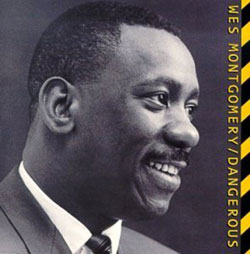 And then, suddenly, the other night I happened to be listening to the MusicChoice® Jazz channel on my cable TV system, when looked to see what recording this could be I realized that I was caught unaware of the release of the reissue, "DANGEROUS"(Milestone). When I heard the sound of vibes and what seemed to be a quartet setting, I knew that this had to have been something he had done with his brother, Buddy Montgomery. After following-up with a quick visit to Amazon.com I found the CD, another reissue, and ordered it immediately. Upon arrival, after reading through the tracks and the varied credits, I realized that this performance had come from the same recording that I had first known on the LP, "THE MONTGOMERY BROTHERS IN CANADA"(Fantasy). That LP is so old, it was actually pressed on blue vinyl, if you can believe that!!! As the years have come and gone, and the CD Era began, those same tracks have been reissued and repackaged several times. I even had the great honor of writing the liner notes for the reissue package of "GROOVE BROTHERS"(Milestone), which seemed to leave off "Stella by Starlight." And then, suddenly, the other night I happened to be listening to the MusicChoice® Jazz channel on my cable TV system, when looked to see what recording this could be I realized that I was caught unaware of the release of the reissue, "DANGEROUS"(Milestone). When I heard the sound of vibes and what seemed to be a quartet setting, I knew that this had to have been something he had done with his brother, Buddy Montgomery. After following-up with a quick visit to Amazon.com I found the CD, another reissue, and ordered it immediately. Upon arrival, after reading through the tracks and the varied credits, I realized that this performance had come from the same recording that I had first known on the LP, "THE MONTGOMERY BROTHERS IN CANADA"(Fantasy). That LP is so old, it was actually pressed on blue vinyl, if you can believe that!!! As the years have come and gone, and the CD Era began, those same tracks have been reissued and repackaged several times. I even had the great honor of writing the liner notes for the reissue package of "GROOVE BROTHERS"(Milestone), which seemed to leave off "Stella by Starlight."This performance was recorded live in Vancouver, Canada at a club called The Cellar on April 16th, 1961. In addition to Wes and Buddy, brother Monk Montgomery was on acoustic bass, and the great Paul Humphrey was on drums. The recording quality is not too bad, Wes is panned to the right side, Buddy and Monk seem to be in the center, and it's possible that Paul Humphrey is either in stereo or in the center as well. His snare drum as recorded, probably direct to 2-track, is a bit loud, but you certainly hear every interaction with what Wes was playing. One interesting side note is that Wes and Buddy chose to play "Stella by Starlight" in the rather untraditional key of Eb major, instead of the more familiar Bb major. This immediately striking to me because the first version in this other key that comes mind is by Grant Green and organist Larry Young and appears on the wonderful album, "I WANT TO HOLD YOUR HAND"(Blue Note) which also features: Hank Mobley(tenor sax) and Elvin Jones(drums). Where the guitar is concerned, the melody sits in a warmer register as the first two notes can now be played on our G-string. Perhaps that's the reason for selecting this key, even though Wes never states the melody! Another version that I also love in this alternate key is by McCoy Tyner and appears on his album, "SUPERTRIOS"(Milestone) with Eddie Gomez and Jack DeJohnette. Though "Stella by Starlight" does fall into the traditional 32-bar song form that might seem to want to divide itself into an [A]-[A2] song form, or even an [A]-[A'] song form, but because the 2nd 16-bars does not begin as the first letter [A] began, it becomes a bit more difficult to label. So, on this transcription I chose to indicate the 2nd 16 bars with a double-bar at the end of bar 16 each time. Hopefully, this won't be confusing to anyone. As Buddy Montgomery's vibes solo arrives at its conclusion and Chorus 1 of brother Wes' 6 chorus solo begins, Wes hits a most traditional C/D voicing with the top note of D-natural on the 10th fret on beat 1. He then takes a breath before his single-note lines begin on the and-of-2 in bar 2. What he plays briefly reveals that he is thinking of the Am7-D7 chords as A Dorian [A, B, C, D, E, F#, G]. Likewise for the ascending phrase in bars 3-4 over Fm7-Bb7, he's playing in F Dorian [F, G, Ab, Bb, C, D, Eb]. In bars 5-8, as we have a ii-V-I to Abmaj7, you could view the entirety of the first 3 bars as being in Ab major [Ab, Bb, C, Db, Eb, F, G] and not approaching each chord individually. When he hits the Db7 in bar 8, because of the presence of Gb on beat 1, it would seem that he's hearing this Db7 chord as Ab Dorian [Ab, Bb, Cb, Db, Eb, F, Gb]. Often times, players would be approaching this sonority as Ab melodic minor [Ab, Bb, Cb, Db, Eb, F, G] making the chord a Db7(9b5). Over the Ebmaj7 in bar 9, there is touch of bluesiness from Wes with the grace-note approach to the G-natural. And, as he negotiates Am7b5-D7 in bar 10 on his way to Gm7, I see the note configuration of the last 3 8th-notes as being from Eb Dorian [Eb, F, Gb, Ab, Bb, C, Db], which is a typical bV sub iim7 chord approach for Wes. 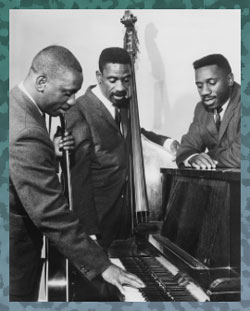 He really doesn't touch down fully in G minor until he plays a brief arpeggio on beat 3 to vault towards making the Ebm7-Ab7 in bar 12 where he returns to Eb Dorian, but makes such a nice chromatic transition to arrive at a D-natural(3rd) for the Bbmaj7 chord in bar 13. Of special note is Wes' inclusion of a G triad (B-D-G) on beat 3 which gives his line so much character over a simple major7 chord. In bars 15-16, over the Dm7b5-G7 chords, the Ab on beat 1, at least for a moment, signals to me that he's approaching the chord from an F Dorian perspective which is pretty typical for Wes, using the Dorian mode built upon the m3rd of chord. As he transitions to the new 2nd-half section and Gm7b5, he approaches that bar with a line that goes right up Bb Dorian [Bb, C, Db, Eb, F, G, Ab], again this is the same kind of modal thinking as the previous chords. He really doesn't touch down fully in G minor until he plays a brief arpeggio on beat 3 to vault towards making the Ebm7-Ab7 in bar 12 where he returns to Eb Dorian, but makes such a nice chromatic transition to arrive at a D-natural(3rd) for the Bbmaj7 chord in bar 13. Of special note is Wes' inclusion of a G triad (B-D-G) on beat 3 which gives his line so much character over a simple major7 chord. In bars 15-16, over the Dm7b5-G7 chords, the Ab on beat 1, at least for a moment, signals to me that he's approaching the chord from an F Dorian perspective which is pretty typical for Wes, using the Dorian mode built upon the m3rd of chord. As he transitions to the new 2nd-half section and Gm7b5, he approaches that bar with a line that goes right up Bb Dorian [Bb, C, Db, Eb, F, G, Ab], again this is the same kind of modal thinking as the previous chords.Normally, at bar 17 of "Stella by Starlight" we might expect, in this key, to see a C7(#5) chord, perhaps with other alterations added in, but, in this vision of the song, there is Gm7b5 to C7(alt.). With the inclusion of Db and Gb, it appears that Wes is thinking of these bars as C7(b9b5). Over the Fm7 in bars 19-20, he is approaching this sonority with chord tones(C-Eb-G-Bb) more than a linear approach. Just as he did at the beginning of this section, he anticipates the arrival of the new chord by playing forcefully on the and-of-4 leading into the bar. Over that Db7(9b5) chord, accompanied by nothing more than Monk Montgomery's walking bass line, you can hear that Wes' approach is coming from Ab melodic minor. Over the Ebmaj7 chord in bars 23-24, he plays a sequence that emphasizes chord tones: C-Bb; Ab-G; F-Eb, and C-Bb again. Because there is no piano or vibes accompaniment, where G-Gb appears, it sounds more bluesy than being a note played in error. During bars 25-26, over the Am7-D7, once again, the approach is very much A Dorian. Then the brief sequence of m7b5 ii-Vs begins with Gm7b5-C7(alt.) and notice in bar 28 over the C7 chord the placement of Db(b9) and Ab(#5) preceding an E-natural which defines the chord. Final minor ii-V of this first chorus over the Fm7b5, I clearly hear him using Ab Dorian, which is again, the Dorian mode built upon the m3rd of the chord. This modal thinking continues over the Bb7(alt.) chord as well. Examine the notes, as it really sounds great, especially because he avoids playing an Ebs(4th). He uses a nice vault through a Bb triad to hit the final Ebmaj7 over which he's playing an F major triad: C(6th)-A(#4)-F(9th) which adds a lot of color to the simple major 7 chord. One additional transcribing note would be that my philosophy is not necessarily to try to notate everything that the soloist played in the most accurate manner, but, at times, to notate and present what I As Chorus 2 begins, and Wes, once again, anticipates the chord and the section by playing forcefully on the and-of-4. His opening phrase with an arpeggio and a descending sweep is then answered by a similar phrase in bars 3-4. Over the ii-V to Abmaj7 in bars 5-6, he extends the idea, but this time, over the V7 chord he puts to use the notes from Eb augmented(Eb-B-G). Over the Abmaj7 in bars 7-8, where Jazz phrasing is concerned, I love the little triplet grouping on beat 1 of bar 8. In bars 11-12, to these ears, things got a little strange, especially in bar 12 over the Ebm7 where he plays a B-natural in a very exposed spot. It is hard to imagine that this is what he really meant to do. In bars 13-14 over the turnaround in Bb major, 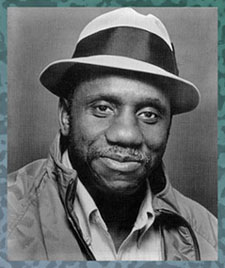 it's nice how he negotiates it all, and the sweep/vault up to a high F-natural is really classic Montgomery, though he uncharacteristically clangs an open string by accident. Over the closing minor ii-V in bars 15-16, there is still a hint of the sense of playing F Dorian over the Dm7b5 and that again extends over the G7(alt.) chord. it's nice how he negotiates it all, and the sweep/vault up to a high F-natural is really classic Montgomery, though he uncharacteristically clangs an open string by accident. Over the closing minor ii-V in bars 15-16, there is still a hint of the sense of playing F Dorian over the Dm7b5 and that again extends over the G7(alt.) chord.As the 2nd half of the form arrives, over the Gm7b5-C7(alt.) in the 1st 2 bars, I still see what he plays in bar 17 as being part of Bb Dorian [Bb, C, Db, Eb, F, G, Ab] over Gm7b5. Over the C7(alt.) heading towards resolution on Fm7, Wes plays a simple but classic line that includes the b9(Db). Over the Fm7, he is playing some simple chord tones, but it also sounds as though he continuing with notes that are more related to C7 altered than F Dorian or F melodic minor. That's my sense and the giveaway to me is again the inclusion of Db's and E-naturals. Wes' lines over the Db7 chord in bars 21-22 quickly bounce between Ab Dorian and Ab melodic minor and back again, all within a short space. In bars 23-24, over the Ebmaj7 chord, everything makes perfect sense until an E-natural appears on beat 4. It's almost as if Wes might have been hearing those 2 bars as a quick I-VI7-im-V, but that is really stretching it a bit. Over the Am7-D7 in bars 25-26 is again pure A Dorian with a couple of nice descending sweeps in bar 26. As the first of the minor ii-Vs arrives, Again, over the C7(alt.) chord, he plays a simple line that puts to use E-natural and Db(b9). Over the Fm7b5 chord in bar 29, the line is derived from Ab Dorian, but in bar 30, over the Bb7 chord, the line becomes more diatonic and relates more to the over all area of Eb major [Eb, F, G, Ab, Bb, C, D]. This is followed by a nice breath during bars 31-32. Chorus 3 initially shows Wes to be playing some of his favorite notes over Am7-D7, the 9th(B) and the 11th(D), pretty and romantic tones to most of us. The D-natural becomes the pivot tone as he makes the change to Fm7-Bb7 in bars 3-4. But here, instead playing in a purely diatonic fashion he employs the Bb 1/2-tone/whole-tone diminished scale [Bb, B, Db, D, E, F, G, Ab]. As he moves to bars 5-6 and Bbm7-Eb7, he plays straight-up Bb Dorian, but over the Eb7, he descends using the Eb 1/2-tone/whole-tone diminished scale [Eb, E, Gb, G, A, Bb, C, Db] which mirrors thematically what he played just 2 bars earlier. When he has cadenced to Abmaj7 he ascends using the C minor pentatonic [C, Eb, F, G, Bb] and then descends applying some traditional chromaticism. Once again, as the chord changes to Db7, he is playing from an Ab Dorian perspective - major to minor, an easy transition for the ears. As the Ebmaj7 arrives in bar 9, Wes takes another long breath, and then pulls out the language of the blues over the Gm7 chord and into the Ebm7 as well. He hears through chord changes in such a great way. You can see the common tones between the G blues scale [G, Bb, B, C, Db, D, F] and Eb Dorian [Eb, F, G, Ab, Bb, C, Db]. As he transits to Bbm7, the 3 notes that he plays show more of the sense of Eb Dorian. In bars 13-14, over the I-vi-ii-V, he goes up over Bbmaj7 using D minor pentatonic [D, F, G, A, C], then descends using Dbm7 arpeggio, then back up with a Cm7 arpeggio before descending using C Dorian [C, D, Eb, F, G, A, Bb]. This half of the chorus concludes over Dm7b5-G7(alt.) using the exact same lines that he played in Chorus 1 over the same spot!!! I think that this is a great example of a great player playing was feels comfortable and swingin' and not worrying about whether or not he is repeating himself and constantly inventing new things. At brisk tempos like this one. moments like this happen with all players, the greats, and the average ones as well. Anticipating the chord and the section by again playing a Db on the and-of-4 of the previous bar, even though he only plays Db and Ab over the Gm7b5, this still feels like relating to the chord by using Bb Dorian. Then, just playing a simple E-natural, the 3rd of C7 that clearly defines the arrival of that chord. Over the Fm7, he employs the expected notes from F Dorian with no chromaticism at all. Over the Db7 chord in bars 21-22, speaking as a guitarist, where Wes is fingering those triplet groupings, this clearly signals a position that indicates Ab Dorian to me. As he cadences to Ebmaj7 in bar 23, he plays a short phrase and then takes another nice breath before leading into the Am7-D7 chords. He is still using A Dorian here but with the nice touch of including an E major triad(G#-B-E) that gives him a nice color tone without really making it A melodic minor. Over the Gm7b5-C7, I hear him playing a descending line more related to C Mixolydian than Bb Dorian, 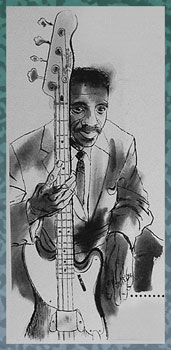 but over the latter part of the C7 bar, he again alludes C7b9 linear sounds. In bars 29-30, over the Fm7b5-Bb7, here it sounds like he's using Ab Dorian with a touch of chromaticism over both bars. Then, as he cadences to Ebmaj7, it sounds as though he didn't quite execute, with his customary grace, what he really wanted to play. So, he then takes a nice breath to recover and collect himself. but over the latter part of the C7 bar, he again alludes C7b9 linear sounds. In bars 29-30, over the Fm7b5-Bb7, here it sounds like he's using Ab Dorian with a touch of chromaticism over both bars. Then, as he cadences to Ebmaj7, it sounds as though he didn't quite execute, with his customary grace, what he really wanted to play. So, he then takes a nice breath to recover and collect himself.Though the line configurations are varied, Chorus 4 bears many similarities with the opening of Chorus 2. He plays his characteristic sweeps through Fm7-Bb7 and Bbm7-Eb7, but as he cadences to Abmaj7, he passes through Eb augmented: Eb-(C)-B-G. Once again, in bars 7-8, as Abmaj7 moves to Db7, he is playing traditional major lines of the Abmaj7 and those quickly become Ab Dorian sounds over Db7. Bars 9-12 seem to pass by very quickly, and before you know it, Wes has arrived at the Gm7 in bar 11, where the lines reference in part notes from D7b9. He anticipates the arrival of the Ebm7-Ab7 in bar 12 by playing out of Eb Dorian. During the Bb major turnaround bars 13-14, every 2 beats Wes is making a chord change and though on beats 3 & 4 of bar 13, I spelled the notes as: D#-E-G#-B as if they were configured as part of an Emaj7 line, but they might been better spelled as Eb-Fb-Ab-Cb and viewed as part of Dbm7 to transit down a 1/2-step to Cm7. I think that this is the better cerebral way to view it. In bar 14, I hear this as using the F 1/2-tone/whole tone diminished scale [F, Gb, Ab, A, B, C, D, Eb]. Finally in bars 15-16 over the Dm7b5-G7, I hear this as applying F Dorian through both bars. Notice that you have F-Eb-C-D-Bb-G-Ab-F - I have left out the chromaticism. This time, Wes takes a breath before hitting the 2nd-half on the downbeat!!! As Wes arrives at bar 17 and the Gm7b5-C7, the repeated riff again speaks of Bb Dorian to me. and in bar 19-20 over Fm7, the ascending line is F Dorian. However this time, over the Db7(9b5) in bar 21-22, I hear this line as being more related to Ab melodic minor because of where the G-natural lands on the and-of-3. Still in bar 22, it becomes more Ab Dorian. Over the Ebmaj7 chord in bar 23, he plays two A-naturals, and though it can be explained as the #4 Lydian sound, knowing Wes' playing as I do, it just seems odd with the grace-note G# in front it twice. it is the kind of thing that you might expect to see if we had been playing the 3rd(G-natural) and putting a grace-note F# in front of it. As the Am7-D7 in bars 25-26 reappear, normality returns too, it is all A Dorian to me. With the minor ii-V, Gm7b5-C7, he forcefully plays the root(G) on the and-of-2. Then in bar 28, over the C7, he is again indicating that he hears a sense of C7b9(E-Db) in that bar, and this is pretty consistent throughout the solo. As those two chord forms move down a whole-step to Fm7b5-Bb7, Wes again hits the root(F) on the and-of-2, but in bar 30, over the Bb7 chord, he is playing out of Ab Dorian, and as it is going to resolve to Ebmaj7, one could see this modal choice as representing a iv-I cadence. Notice how smoothly the lines flow together. The opening part of his line over Ebmaj7 is straight up the G minor pentatonic [G, Bb, C, D, F]. To me, this is always a can't miss choice using the minor pentatonic built upon the 3rd(G) of the major 7th chord. Chorus 5 begins with some wonderful thematic phrases, as Wes offers octave punctuations on beat 1 of each chord change and, in each case, the octave is either the 4th of the m7 chord, or it could be seen as the root of the V7 chord. The phrases that follow all begin on the and-of-2 and are descending arpeggios highlighting the prettier chord tones. In the 2nd bar of each phrase, notice that each one concludes with 2-and, and more than that, the phrasing is long-short which is so key to swingin' Jazz phrasing! Going into bars 7-8, Wes anticipates the chord change by playing a full Abmaj7 chord on the and-of-4. In these bars, as Abmaj7 becomes Db7, you should notice that he smoothly moving from a traditional major line configuration in Ab to an Ab minor, or Dorian approach over the Db7. Sometimes, especially at bright tempos, it is easier to hear through these changes by keeping the root sense the same and just going from major to minor! Between bars 9-11, he plays through the Ebmaj7, and then the quick Am7b5-D7-Gm7 in a most melodic way. 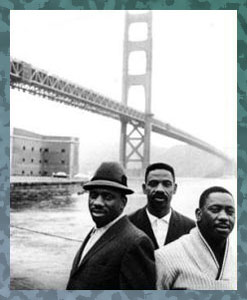 However, as he lands on bar 13 and the Bbmaj7 chord, from the sound of his line, it feels to me as though he's hearing through that change as if it was a G7(alt.) chord approaching the Cm7 that is about to arrive in bar 14. In bar 14, the line acknowledges both the Cm7 and the F7 with prime chord tones: Eb(m3rd) and A(3rd). As the 1st half of this chorus ends, over the Dm7b5-G7(alt.), I still hear that sense of F Dorian through both chords as you never really hear or see a B-natural(3rd) to reference that important chord tone for G7. However, as he lands on bar 13 and the Bbmaj7 chord, from the sound of his line, it feels to me as though he's hearing through that change as if it was a G7(alt.) chord approaching the Cm7 that is about to arrive in bar 14. In bar 14, the line acknowledges both the Cm7 and the F7 with prime chord tones: Eb(m3rd) and A(3rd). As the 1st half of this chorus ends, over the Dm7b5-G7(alt.), I still hear that sense of F Dorian through both chords as you never really hear or see a B-natural(3rd) to reference that important chord tone for G7.If you remember back to our original discussion of the chord changes that we have become accustomed to seeing during "Stella by Starlight" and that, at bar 17, in this particular key, we might have expected to see C7#5 (or something like that), instead of Gm7b5-C7. As Wes hits the 2nd half of his 5th chorus, it sounds like he is choosing to ignore the sense of Gm7b5 and approach the entire 2 bars in terms of C7b9. The key notes, minus the chromaticism, indicating this are: G, Bb, C, Db, and E. As he lands on Fm7, the emphasis returns to F Dorian. Wes' lines over the Db7 in bars 21-22 reveals that he is playing Ab Dorian. As he cadences to Ebmaj7 for bars 23-24, his line begins with a classic pick-up into many maj7th lines, here you have Bb(5th)-C(6th)-D(maj7th)-F(9th). You have probably heard this configuration on countless recordings on all instruments. Returning for the last 8 bars of this chorus, over the Am7-D7, the notes are all diatonic and within the A Dorian mode in my view. Over the Gm7b5-C7 in bars 27-28, he takes a different approach, but still connected more to C7 altered sounds, especially in the 2nd bar. Notice both Db(b9) and Eb(#9) as his descending sequential line eventually hits C, the root. As the Fm7b5-Bb7 arrive in bars 29-30, the spelling of the notes should help you to see that he's hearing through these changes by using Ab Dorian lines with some chromaticism all leading to resolution on a G-natural for the Ebmaj7 chord. Over the final 2 bars, Wes plays a really interesting and complex line configuration. In bar 31, you hear a Gb, the minor 3rd, but in bar 32, the line is completely out of Eb major. Wes' last solo chorus, Chorus 6 finds up in the highest register to this point, hitting a high G-natural both over the Am7-D7 bars and the Fm7-Bb7 bars. He stays very close to the modal notes of A Dorian and F Dorian, depending upon the chord change. As the Bbm7-Eb7 bars arrive, he is using Bb Dorian, but, in bar 6 over the Eb7, he pulls out another wonderful linear trick by using E Dorian [E, F#, G, A, B, C#, D] over beats 3-4. Needless to say, it goes by very quickly, but this is yet another great example of applying the iim7 chord over the b5 substitute with lines. As the chords pull to Abmaj7, this is all Ab major (with some chromaticism(Bb-A-Ab-G), and again, notice how on the last 2 beats of the Db7 bar you can clearly see a sense of Ab Dorian. Repeating myself, this is simply major to minor! Finally, in bar 9, a nice resolution to Ebmaj7. As the chord changes move through Am7b5-D7(alt.)-Gm7 and Ebm7-Ab7, Wes uses a similar blues lick to the one that appeared in Chorus 3. But notice how, this time, as he moves into the turnaround bars for Bbmaj7, he changes his landing point from a G-natural to now F-Eb. From there, the line is really connected to material from C Dorian. 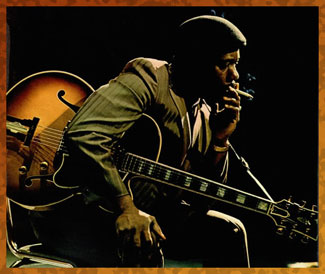 As he arrives at the Dm7b5-G7 bars, this time I see it as more of an F Dorian approach for the 1st 3 beats, but then there is the transition to C7(b9) ideas(E-Db) and the inclusion of the #5(Ab) as well. As he arrives at the Dm7b5-G7 bars, this time I see it as more of an F Dorian approach for the 1st 3 beats, but then there is the transition to C7(b9) ideas(E-Db) and the inclusion of the #5(Ab) as well.The last two notes of the prior section, G-Bb serve as a pick-up into the closing 16 bars of the solo. The repeated riff of Db-Bb, though they are both chord tones for Gm7b5, they give a rather bluesy feeling these bars. From there, in bars 19-20, he ascends using F Dorian over Fm7. Over the Db7(9b5) in bars 21-22, the feeling drifts between Ab melodic minor, notice the fleeting glance over G-natural, and Ab Dorian, the Gb returns. It's always important to notice that, over the Ebmaj7 chord Wes' lines add a touch of grease as he slides into the 3rd(G-natural) each time. This is obviously so it doesn't sound so vanilla. Over the Am7-D7 in bars 25-26, the inclusion of G# as a neighboring tone adds a jazzy touch to what is still basically A Dorian. Over the Gm7b5-C7(alt.) chords, I feel that he is focused on observing the C7 more than the Gm7b5. As the final 4 bars are now upon us, he is again using Ab Dorian over Fm7b5, but on beats 3 & 4 of bar 30, though awkwardly phrased, those notes are now derived, I believe from the Bb altered dominant scale [Bb, B, Db, D, E, Gb, Ab]. Then, with one last flourish over the resolution to Ebmaj7, Wes skillfully plays his way around and artfully lands on an E-natural as Buddy plays another chorus on vibes before these super-talented brother begin trading 4's. Even though I am paying tribute to my hero, Wes Montgomery, with the recent passing of a dear friend and longtime colleague, 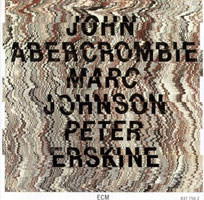 John Abercrombie, I can't leave this page without saying something about him that is connected to this analysis. I have to share with you all that perhaps my all-time favorite version of "Stella by Starlight" appears on John's 1988 live recording "JOHN ABERCROMBIE/MARC JOHNSON/PETER ERSKINE"(ECM). Their very elastic and open interpretation of this great old standard served to define a higher aesthetic for trio guitar playing that survives to this day, and will continue long into the future. It begins with John playing a chorus by himself at a blistering tempo. He is then joined by the ping of Peter's beautiful ride cymbal with Marc Johnson adding conversation touches. From there the conversation and the interplay grows deeper. Simply put, it was a spectacular performance. If you were not familiar with it before, please take a moment and find a way to listen to it in its entirety. I am certain that Wes Montgomery would have loved listening to John's rendition. John Abercrombie, I can't leave this page without saying something about him that is connected to this analysis. I have to share with you all that perhaps my all-time favorite version of "Stella by Starlight" appears on John's 1988 live recording "JOHN ABERCROMBIE/MARC JOHNSON/PETER ERSKINE"(ECM). Their very elastic and open interpretation of this great old standard served to define a higher aesthetic for trio guitar playing that survives to this day, and will continue long into the future. It begins with John playing a chorus by himself at a blistering tempo. He is then joined by the ping of Peter's beautiful ride cymbal with Marc Johnson adding conversation touches. From there the conversation and the interplay grows deeper. Simply put, it was a spectacular performance. If you were not familiar with it before, please take a moment and find a way to listen to it in its entirety. I am certain that Wes Montgomery would have loved listening to John's rendition.As we have now arrived at November, 2017, here's hoping that everyone had a very happy and safe HALLOWEEN and, as November progresses, we certainly hope that everyone has a very warm, cozy, toasty, and HAPPY THANKSGIVING!!! Once again, from KHAN'S KORNER 1, we are wishing everyone the best for the remainder of 2017.
[Photo: Wes Montgomery and his Gibson L-5 in 1959
Photo by: Steve Schapiro] |